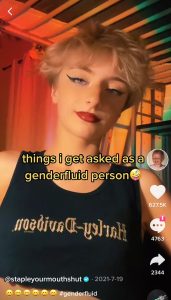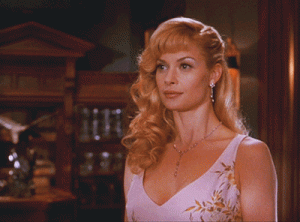
Woman making ASMR sounds with microphone and bubble wrap on pink background, closeup. Source: IStock
One moment I am watching a video of a woman making a smoothie, and then the following video that pops up on my TikTok For You page is a large boombox microphone with a mouth taking ¾ of the screen and softly but aggressively chewing a cheese stick. The next thing I know, I am down a deep tunnel of ASMR videos with hundreds of people (mainly females) tapping a microphone or crunching slime or spraying a water bottle; the variety goes on forever.
Autonomous sensory meridian response, or ASMR, is a tingling sensation when some people hear soft sounds, such as whispered voices or the poof of a bag of chips opening. Something about the tingling sensation of the noises triggers this deep pleasure and relaxation in so many, and others don’t get it at all.
ASMR is seen as exceptionally sexual due to the intimate nature of the whispering and soft voices. ASMR also equates to sex because the noises and sensations from the Youtube and TikTok videos are understood by some but not by others; this is where desires come in. Once an ASMR advocate watches a video and feels the sensations that ignite pleasure, they desire that sensation again, similar to how certain sexual acts can ignite joy. This drive for more ASMR in the online community is driven by the desire for more sensation, so as the ASMR community has grown over the past few years, so has the variety for different sounds. Once someone has watched a sound continuously, the sound will not have the same effect as the first time watching it; it is the same feeling someone can get when they have had too much of one kind of snack, and eventually, they get sick of it. So the ASMR community has had to keep up with the demand for new sounds to get the same sensation that drives the whole community. As Elizabeth Grosz says, “Desire desires to be desired.”
ASMR enacts a pleasure response no matter what video you watch. The sounds tickle a part of the brain that creates a “silvery sparkle” inside the head, a euphoric “brain-gasm” or a feeling like goosebumps in the scalp that faded “in and out in waves of heightened intensity.” Vertebrate brains are fundamentally hardwired for pleasure and pain. Yet with joy comes consequences. The fact that ASMR gives people a “brain-gasm” elicits a judgmental reaction from anyone who does not feel the same sensation when listening to the noises. Listening to ASMR becomes deviant and pornographic since people feel such an intense pleasure that can turn into a desire for more content. However, individuals have a range of likes and dislikes, and there are individuals and even subcultures that seem to have a different pattern of pleasure stimulation than what is typical. (Perhaps in some cases, this is mainly cultural, not neurotypical.) S&M comes to mind. Some people experience pain as pleasurable and erotic.
The internet is vast, but it brings like-minded people together. At its best, it serves to unite kinky freaks, dissidents of oppressive regimes, and sufferers of obscure diseases. Simultaneously, this tendency can do the cruel or misinformed — giving shared language to Nazis and incels and other bleak dopes who were once kept mercifully isolated from one another. This feature of the internet is, at best, value-neutral; in any case, A.S.M.R. tests its limits. The YouTube subculture is bonded not by belief but rather by an ineffable sensation — perhaps the first time the internet has revealed the existence of a new feeling.




